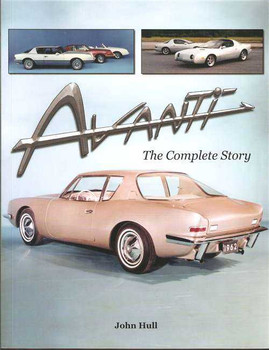Description
Author: Bryan Reynolds, ISBN: 9781847976871, Hardcover, 159 pages, published in 2014
A history of the Rudge-Whitworth cycle and motorcycle company, from the late 1800s to the 1940s, including full production histories of the motorcycle models. With hundreds of original photographs, Rudge-Whitworth - The Complete Story is an ideal resource for anybody with an interest in the world's largest cycle and motorcycle manufacturers of the early twentieth century.
- Origins of Rudge-Whitworth, from Daniel Rudge's early bicycles, to the Pugh family merger
- An expansion into motorcycle production in 1909, with the 'M' prototypes and 'F'-head engines
- The invention of the Rudge Multi gear engine in 1912, and a subsequent Isle of Man TT win in 1914
- The innovative Rudge Four' engines, with four parallel valves per cylinder
- The 'Python' models - Rudge equipment used by other manufacturers, including in Enzo Ferrari's Scuderia Ferrari
- The post-war slump and a move to EMI, with later attempts to revive the Rudge name
Rudge-Whitworth — The Complete Story charts the history and development of one of the world's largest cycle and motorcycle manufacturers in the early twentieth century. Daniel Rudge founded the company in the 1860s, on his return to Wolverhampton from the army. With innovative ideas about cycle mobility and adjustable bearings, he helped to create the cycle industry and put Rudge bicycles on the map. After a merger with the Pugh family's Whitworth cycle business, the Rudge-Whitworth company was formed, soon becoming the largest cycle and tricycle company in the world. In 1909 the company expanded into motorcycle production, and this book cov6rs the period from the first motorcycle prototype in 1910 to the end of production during the World War II and subsequent developments.
The company used the resilient single-cylinder 'F'- head engines in their motorcycles, which suited the poor grades of metals available at the time. In 1912 the Multi gear engine was invented, which linked expanding and contracting belt rims, and it was a Rudge Multi model that led to Cyril Pullin winning the Isle of Man IT in 1914. Whilst the Multi gear stood Rudge-Whitworth in good stead, it was the Rudge Four' engine design that put the company ahead of its competitors after the post-war slump. The design incorporated four parallel valves per cylinder, and led to many racing successes.
From 1930, in an effort to boost declining sales, the engines, clutches and gearboxes were offered to other manufacturers under the name of 'Python'. In the early 1930s over three dozen firms used Python equipment for their racing machines and general sales. Notably, Enzo Ferrari used Rudge machines in his Scuderia Ferrari to win many races and claim Italian championships.
However, these sales could not save the RudgeWhitworth company, which was eventually taken over by EMI in the late 1930s. During the World War II production ceased, and the Rudge name was sold to the Raleigh Cycle Company, to end what had been an eventful period of production. Over two thousand Rudge machines are still in existence, and are still being enjoyed by their owners today.
With original colour photographs and comprehensive specification guides from the factory brochures, Rudge-Whitworth — The Complete Story tracks the history of the company's motorcycle development and innovations in engine design. The sales motto of the company, Rudge it, don't trudge it', gives a clue to the remarkable story of a firm whose motorcycles were amongst the fastest in production, leading to racing success at the Isle of Man IT and elsewhere.























